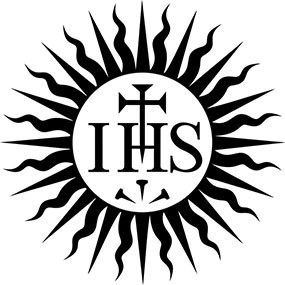
The Jesuit OrderIn the year 1521, in a cave near a town in Spain called Manresa, on the road to Barcelona, a limping, crippled, thirty year old halted his travels to spend a few days in rest and recuperation. He remained for ten months. During this time he wrote what came to be known as the Spiritual Exercises, which became one of the foundational documents of what would eventually be known as the Society of Jesus - the Jesuits. The young, weary traveler was Inigo de Loyola, who later took the name Ignatius. Grievously injured in the battle of Pamplona, Loyola vowed a lifetime of dedication to God if he were allowed to live. So began the religious conversion of the future founder of the Jesuit order. In the centuries following, few human societies have aroused such profound admiration as well as such deep animosities as has the Society of Jesus. In 1540, Pope Paul III issued the Papal Bull Regimini Militantis Ecclesiae, officially founding the Society. Loyola, together with a handful of men - the ten companions - were now the Society of Jesus. They had come together at the University of Paris in the 1530s. From this tiny beginning came the thousands of men constituting the international order existing today. It is interesting to note that other regular orders of the Church, e.g. Dominicans, Franciscans, Augustinians and others were founded several centuries prior to the Society. The Jesuits' rise to prominence, then, is all the more remarkable and interesting.
Their "Way of Proceeding" to fulfill their reason for being, was marked with significant departures from the then-accepted lifestyle of the religious. They were quite different from the existing orders who were monastic, contemplative and mendicant. The Jesuits were the first religious order in the Church to undertake formal education as a major ministry. They became a teaching order. They observed no fixed time of day or night for the recitation of prayers in choir. They did not adopt a distinctive manner of dress, such as the hooded habit of the monk. They did not live in monasteries.
In addition to the three vows of poverty, chastity, and obedience, they would pronounce a special vow promising to journey anywhere in the world, when so ordered by the Pope. They were quite selective in admitting prospective members to training for the order. They were chosen on the basis of mental and physical fitness, appearance and family background. In general, Jesuits in the early decades of the order came from urban families and social groups that prized literary and intellectual skills. They were meant to excel. Their members came from many different countries, social strata and economic backgrounds. The older, established orders of the Church did not always welcome the efforts and successes of the Jesuits. Jesuit involvement in affairs of state contributed to ill-will in some countries. Their emergence from the Basque country of Spain was looked upon by many with fear and suspicion. Their success in education, evangelization and missionary work, and the powerful positions they occupied as confessors and tutors to royalty, caused jealousy in some clerical ranks. They were successfully different.
Accusations of Jesuit abuses of power and influence arose. Most were baseless allegations. Some contained elements of truth. Relations between the governments of Portugal, France, Spain and the Jesuits eventually became so contentious that expulsion orders were issued by the rulers of these countries and the Jesuits were banished from them. The final expulsion took place in 1767 in all of the Spanish realm, including Spanish Colonial New Spain. This in an era known as The Enlightenment effectively extinguished the educational and missionary efforts of the Jesuits. It did not, however, cause the complete demise of the Society. There was yet another blow. In 1773 Pope Clement XIV proclaimed a Papal dissolution of the Society. Forty-one years later, however, in 1814, Pope Pius VII issued a Papal Bull and restored the Company (Society) of Jesus. Once again, the Jesuits returned to being a worldwide regular order of Catholic priests who serve as missionaries, scientists, theologians, philosophers and teachers.
Jesuits in the Pimería AltaFrom January 1691, beginning with Padre Eusebio Kino, until the administration of Padre Custodio Ximeno in 1767, Jesuit missionaries operated the Missions of Guevavi, Tumacácori, Calabazas, and Sonoitac. Residence was Guevavi Mission (unless noted otherwise) while visiting the Tumacácori, Sonoitac, and Calabazas missions. A revolt of O'odham people in the Altar Valley on Sunday, November 21, 1751 effectively closed the missions down, and Guevavi and its visitas did not get another resident missionary until the winter of 1753. Francisco Xavier Pauer December 1753 - January 1760 There were also two secular priests who visited Guevavi on a few occasions.
The Jesuits were expelled from the northern provinces of New Spain in July of 1767 and it was a full year before the Franciscan order of Catholic missionaries began to replace them. |
Last updated: June 11, 2020
